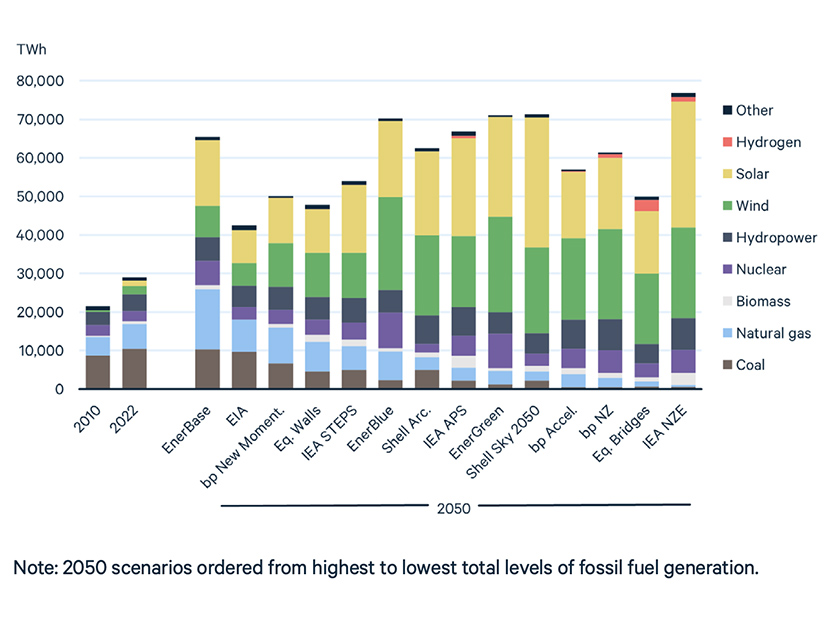Many recent projections for energy use have fossil fuel use plateauing after 2030, when it needs to rapidly decline to meet midcentury carbon targets, Resources for the Future said April 2 in a new report.
The study — “Global Energy Outlook 2024: Peaks or Plateaus?” — reviews projections on the future of energy use and production from entities such as the U.S. Energy Information Administration, the International Energy Agency, the Organization of the Petroleum Exporting Countries and oil firms. They all use different scenarios, but RFF applied a detailed harmonization process comparing 16 scenarios across eight outlooks published last year, as well as two historical sources.
Even the scenarios that limit temperature change to 1.5 degrees Celsius by 2100 have substantial fossil fuel consumption through 2050, which suggests that a phaseout by then is not a prerequisite to achieving international climate goals.
“World primary energy demand has experienced a series of energy additions, not energy transitions, with newer technologies such as nuclear, wind and solar building on top of incumbent sources such as biomass, coal, oil and natural gas,” the report says. “To achieve international climate goals and limit warming to 1.5 C or 2 C by 2100, a true energy transition is needed.”
The scenarios in the report suggest that although a transition is needed, fossil fuels will not have to be eliminated. If fossil fuels are not phased out, the world will need to scale up carbon-removal technologies such as direct air capture; carbon capture, utilization and storage (CCUS); and nature-based solutions, all of which require robust monitoring and verification.
As of 2022, 42 million metric tons of CO2 were captured internationally — just 0.1% of annual global emissions, but a tripling of the technology since 2010, a compound annual growth rate of 8.7%. That growth is already on pace for some of the scenarios, but with more ambitious climate policies, the technology would need to grow by nearly 20% a year.
“Are these growth rates achievable? Technically speaking, the answer is ‘yes,’” the report says. “CCUS infrastructure and underground storage reservoirs are more than adequate to handle these volumes of CO2,” the report says. “However, the future costs of deploying these technologies, including to relatively novel sectors such as electric power generation (Most CCUS today is used in the industrial sector.), are not well understood.”
The scenarios all have the global economy becoming more efficient, so energy demand grows slowly or declines under almost every scenario. In the ambitious climate scenarios, demand can drop as much as a third by midcentury.
While overall energy demand drops, the scenarios all show significant growth in the global demand for power. At the end of 2019, electricity was roughly 20% of final energy consumption, but it grows up to 50% by midcentury in aggressive scenarios.
“This growth enables electricity to become a larger provider of energy services across the economy, particularly in the buildings and transportation sectors,” the report said.
Coal declines in all scenarios, while natural gas demand is mixed, with half the scenarios showing growth and the other half showing declines.
“Wind and solar grow faster than any other sources in percentage terms under all scenarios, but with a wide range,” the report said.
Wind and solar have represented about 75% of global capacity additions in the past decade, with solar growing at 10% a year from 2020 to 2022 — 320 GW per year. To reach 11,000 GW by 2030, as some scenarios call for, solar deployment would need to ramp up to 800 GW annually.
The nations of the world have committed to tripling nuclear energy by 2050, but that would require a fundamental change in the trajectory of the technology in developed countries, of which 12 out of 22 have seen declines over the last decade. Most scenarios have the technology growing modestly, with only two having it triple.


